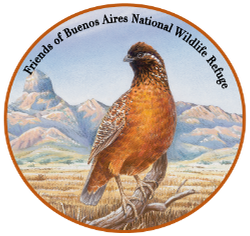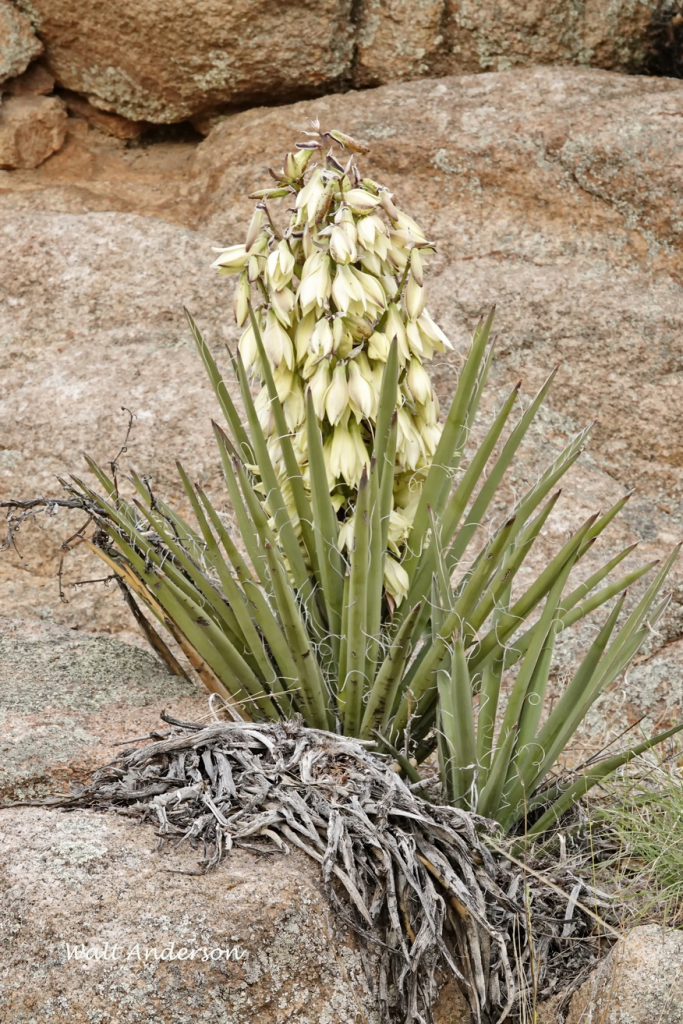
Yucca
by Walt Anderson
While cacti often epitomize “desert” in North America, it’s the yuccas that are widespread and notable representatives of semiarid areas throughout much of the continent from Guatemala to southern Alberta, Baja California to Florida and up the coast to Maryland. There are almost 50 species, at least 14 in Arizona. They are completely dependent upon yucca moths for pollination, but the story is more complex than most of us realize. Let’s take a closer at look at these fascinating plants.
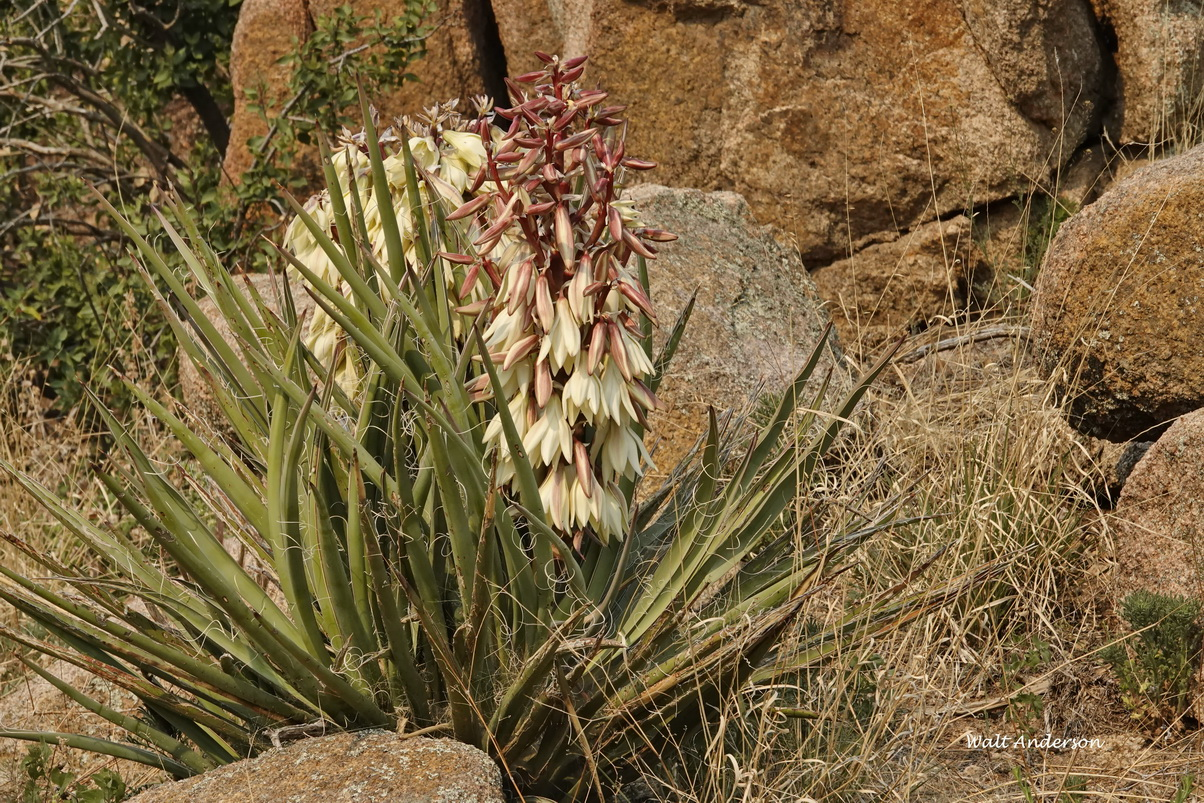
The taxonomy of yuccas has been, to me at least, taxing. For some time, I followed the idea that they were in the family Agavaceae, along with agaves, sotol, and nolina (the so-called “beargrass” of our grasslands). Other taxonomists had included yuccas and agaves in the huge family of lilies, the Liliaceae. However, it became clear that the lily family as described was a grab-bag or catch-all grouping of plants that really didn’t belong together. Thus in 2009, taxonomists took the axe to the lilies, and the yucca ended up in the Asparagaceae, the asparagus family! It’s still a huge family (nearly 3000 species). The yucca, agave, nolina, and sotol now found themselves grouped with such unlikely cousins as the hyacinth, grape hyacinth, dracaena, spider plant, hesperaloe, and, of course, the asparagus.
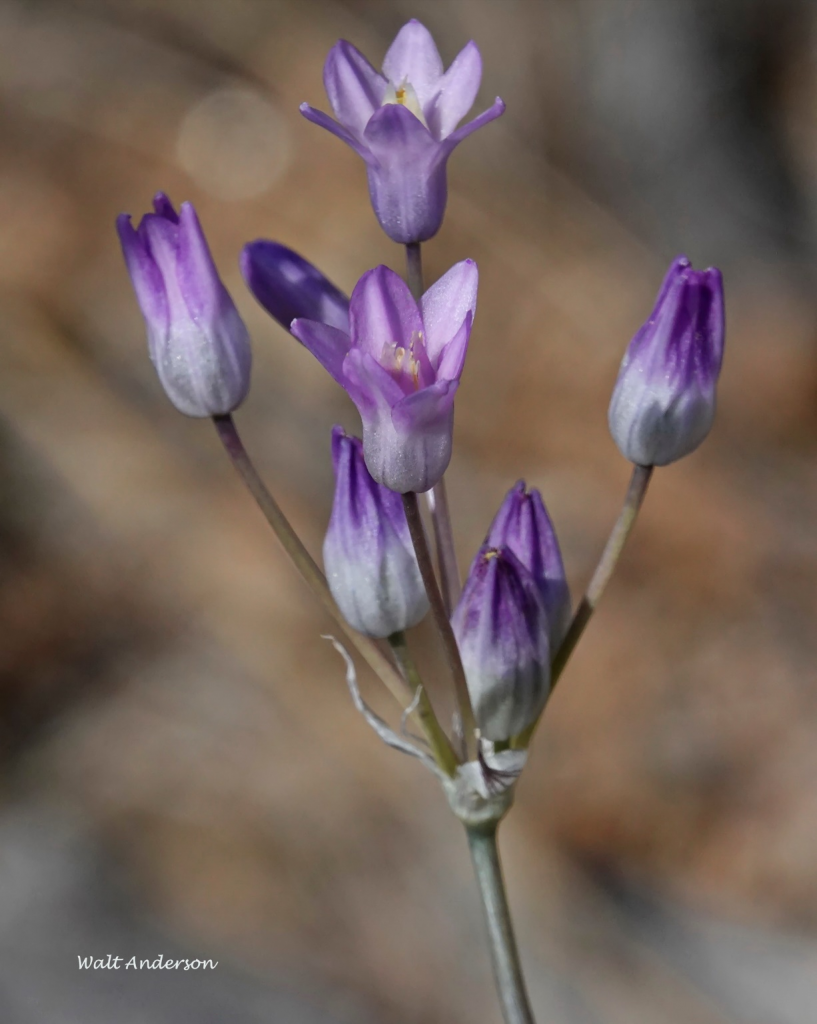
One of my favorite early spring plants, blooming at the same time as the Banana Yucca shown in the previous photo, has always been the Blue Dicks, also known as Wild Hyacinth. I learned this as the lovely genus Brodiaea of the amaryllis family. It upset me a bit when they changed the genus to the less elegant name Dichelostemma, though then the name Blue Dicks made more sense. Even that wasn’t good enough for the taxonomists, for in 2017, they renamed it Dipterostemon, and took it from the lilies into the asparagus family! So now this lovely flower sits at the same familial table as the yucca and agave. As someone who labels every photo with its proper name, I was righteously indignant—it’s taxonomy without representation (mine, anyway)! It’s now a test of my own adaptability.
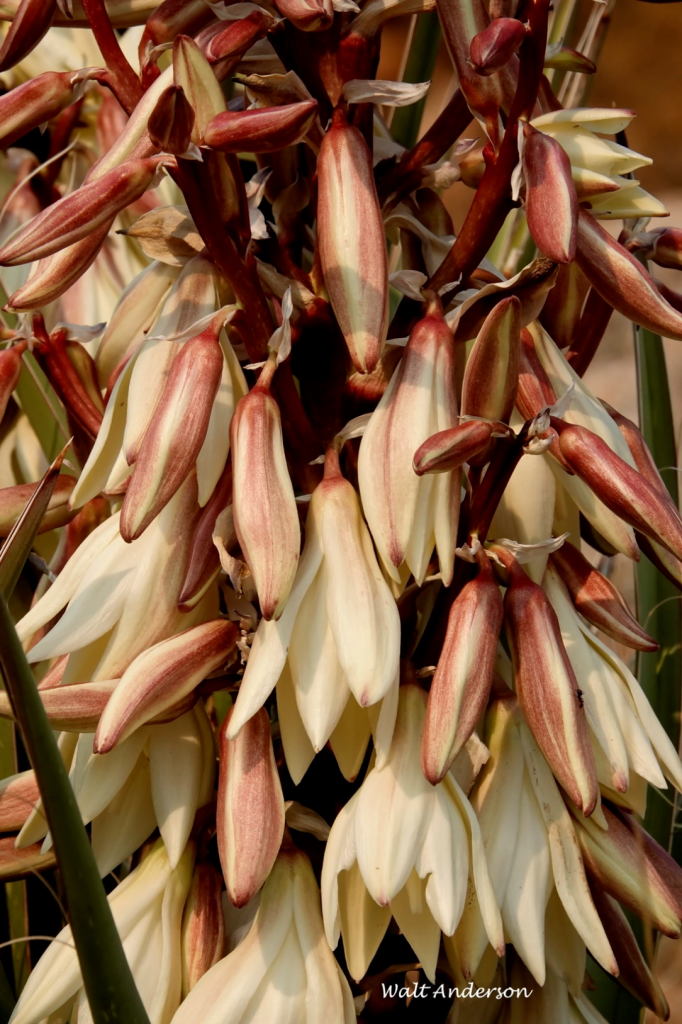
All right, though it’s a pain for me to learn new tricks, I grudgingly accept that the botanists are just doing their jobs—trying to group things by their true evolutionary relationships. If I can accept that the marmot-sized hyraxes of Africa are the closest living relatives of elephants, I can certainly swallow that yuccas, spider plants, and Blue Dicks can be grouped together—it’s all relative. “A rose by any other name would smell as sweet” would apply equally well to the yuccas and their kin. And it’s better to focus on the beauty of these flowers and the remarkable adaptations of these plants than to get hung up on names.

The Banana Yucca is blooming now, and you can see a superficial resemblance to an agave, though the latter is definitely a succulent, while the Banana Yucca is semisucculent, and some yucca species have flattened leaves that aren’t succulent at all.
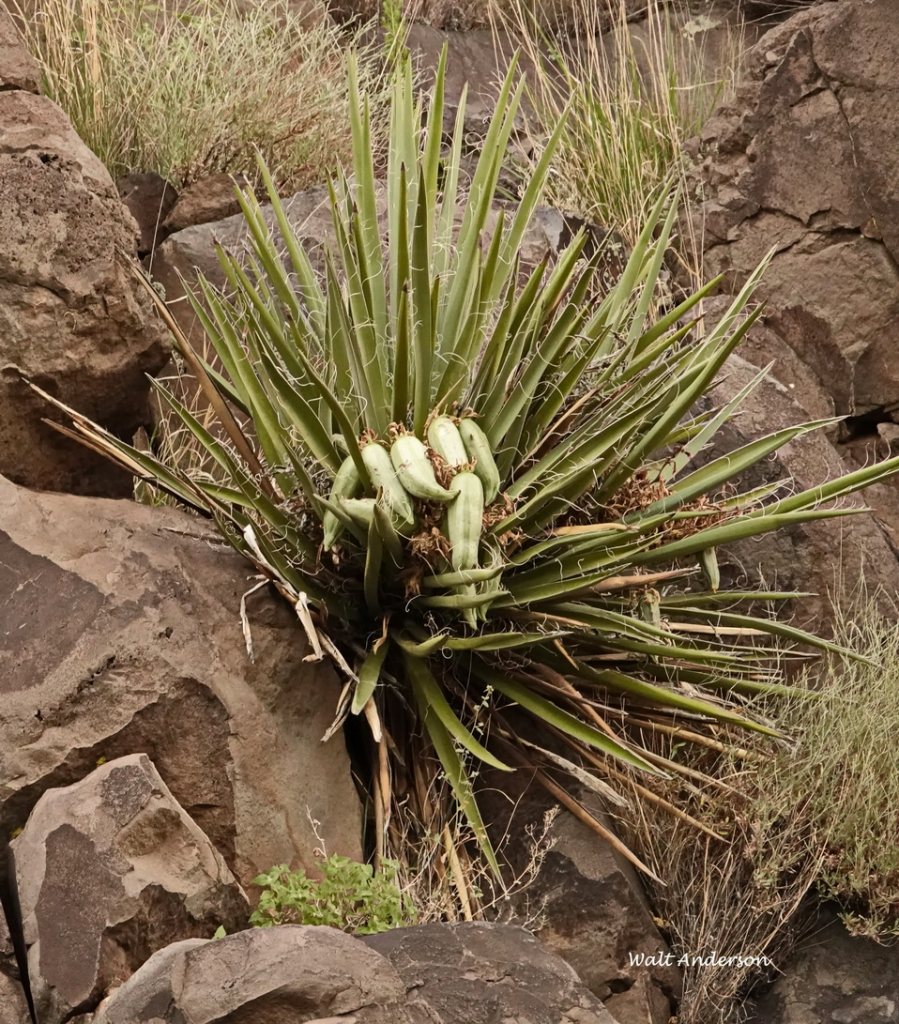
The Banana Yucca gets its name from its banana-like fruits, which contain many flat seeds. Of course, it’s a superficial resemblance, but Native Americans did eat these large pulpy fruits raw or roasted. They also dried the fruits for winter use, fermented them for a potent beverage, or ground the seeds into meal. Yucca fibers were used for making sandals, mats, ropes, baskets, and other clothing items. Some species produced a decent soap substitute in their roots. Today, yuccas are desirable ornamentals in xeric landscaping, since they rarely require any supplemental water.
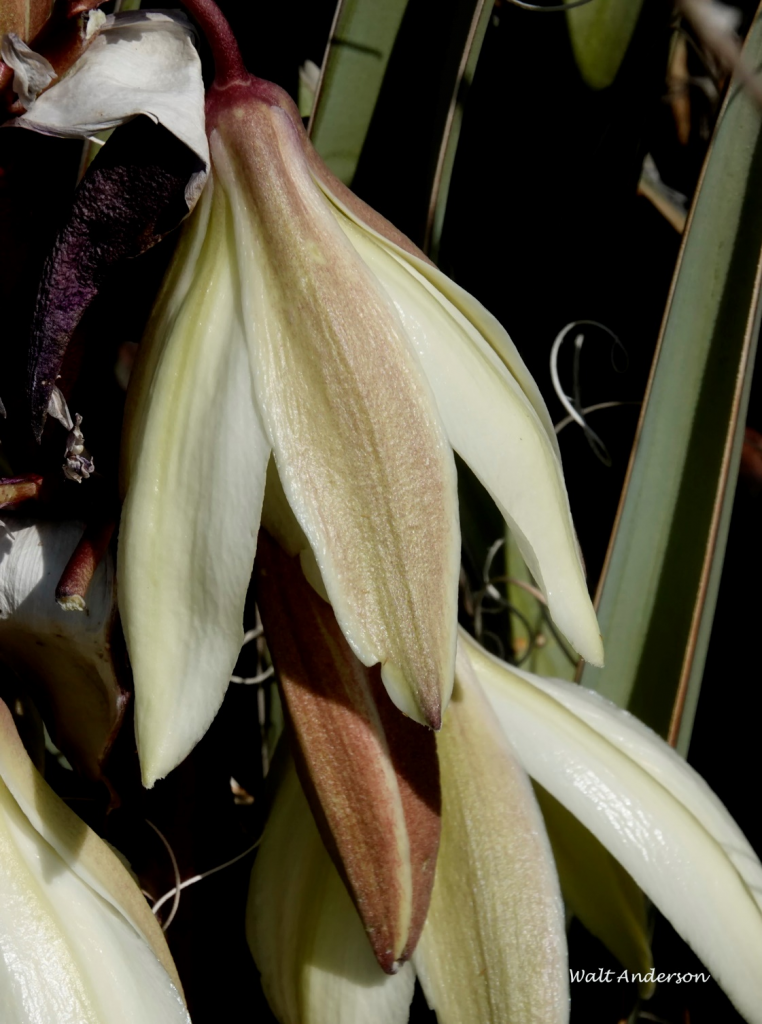
Yuccas, like figs, are often cited for their intimate mutualistic relationships with yucca moths, which they depend on for pollination, even though the moths collect a fee for their services. Their larvae feed on some of the seeds, but without the moths, none of the seeds would be fertilized at all. It’s a bit like a controlled parasitism, but at its best, the system benefits both. Just as the taxonomy of yuccas has been revised as more data became available, the same is true for yucca moths. One yucca moth named Tegeticula yuccasella was found to actually be a complex of eleven species of pollinator moths and two species of “cheaters” that lay their eggs after the flowers have already been pollinated by the “good guys”; thus their larvae eat the seeds despite having done nothing good for the plant. Even the pollinator species can’t get greedy, for if they lay too many eggs or provide too little pollen, the plant will abort those fruits. It’s a yucca’s way of keeping the moths “honest.”

One of my favorite species is the Narrowleaf Yucca (check out those slender leaves). It often grows in the rangelands and blooms in early summer.

It too depends on yucca moths in order to produce seeds. I cannot improve upon this description of the pollination process by Raguso and Willis in A Natural History of the Sonoran Desert: “A female yucca moth uses her unique mouthparts (called tentacles) to gather a pollen ball from yucca anthers, walks or flies to another flower, slam-dunks the pollen ball into its stigmatic cavity, and then deposits a number of eggs within the flower’s ovaries.” The resulting caterpillars eat the seeds where they were laid and eventually drop to the ground to go into diapause, a “sleep” that they maintain until metamorphosing into adult moths sometime within a couple years. By maturing at different times, they avoid putting all their eggs in one basket.
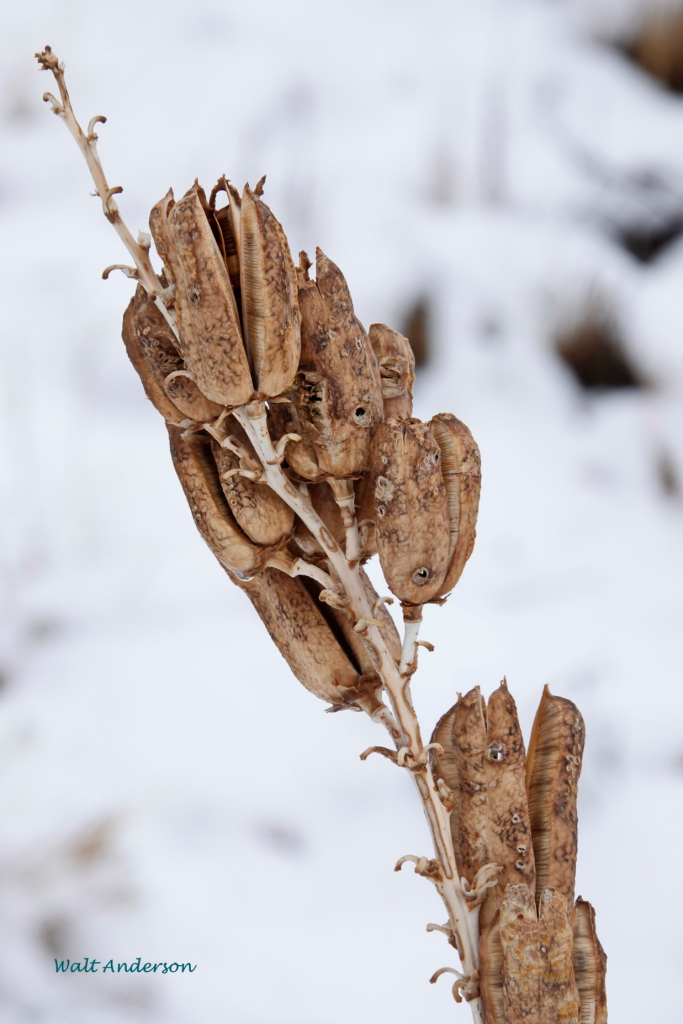
The fruits develop into flat seeds within capsules like these. Look closely and you can see plenty of exit holes from the dependent caterpillars, but there are still viable seeds they didn’t touch.
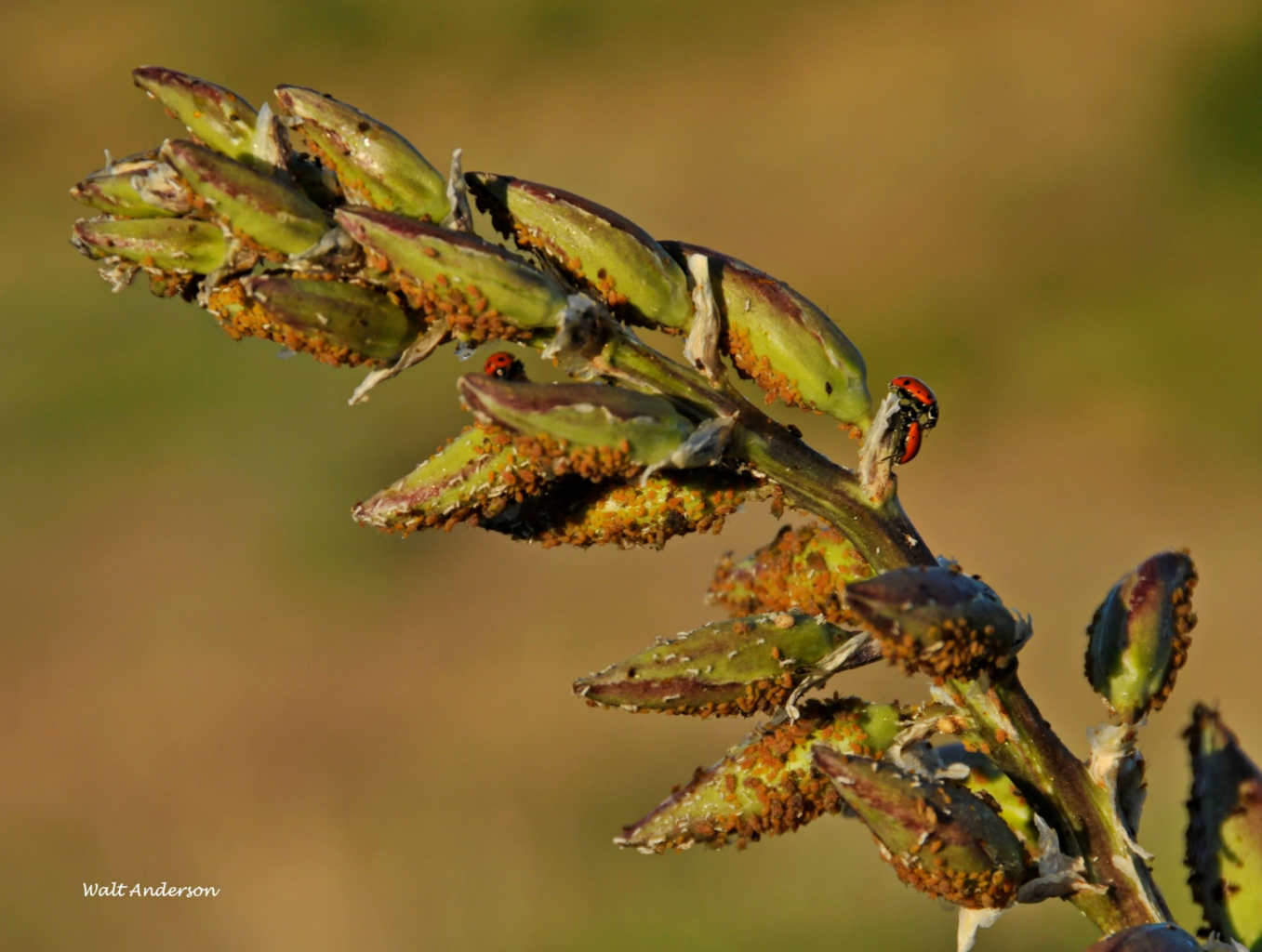
Of course, life is not simply a cool partnership between one species of insect and a plant. Here a Narrowleaf Yucca is infested with aphids (see—they don’t just mess with your roses or peaches!). They are exploiting the plant for its sugars. Ladybugs (or ladybird beetles) then arrive to prey upon the aphids. Each plant is really a micro-ecosystem with many critters involved.

Despite their spine-tipped leaves, yuccas are vulnerable to herbivores too. Cattle, pronghorn, deer, woodrats, jackrabbits, and more can take their share. This herbivory reduces photosynthetic capacity and ultimately decreases the potential to produce a good seed crop.
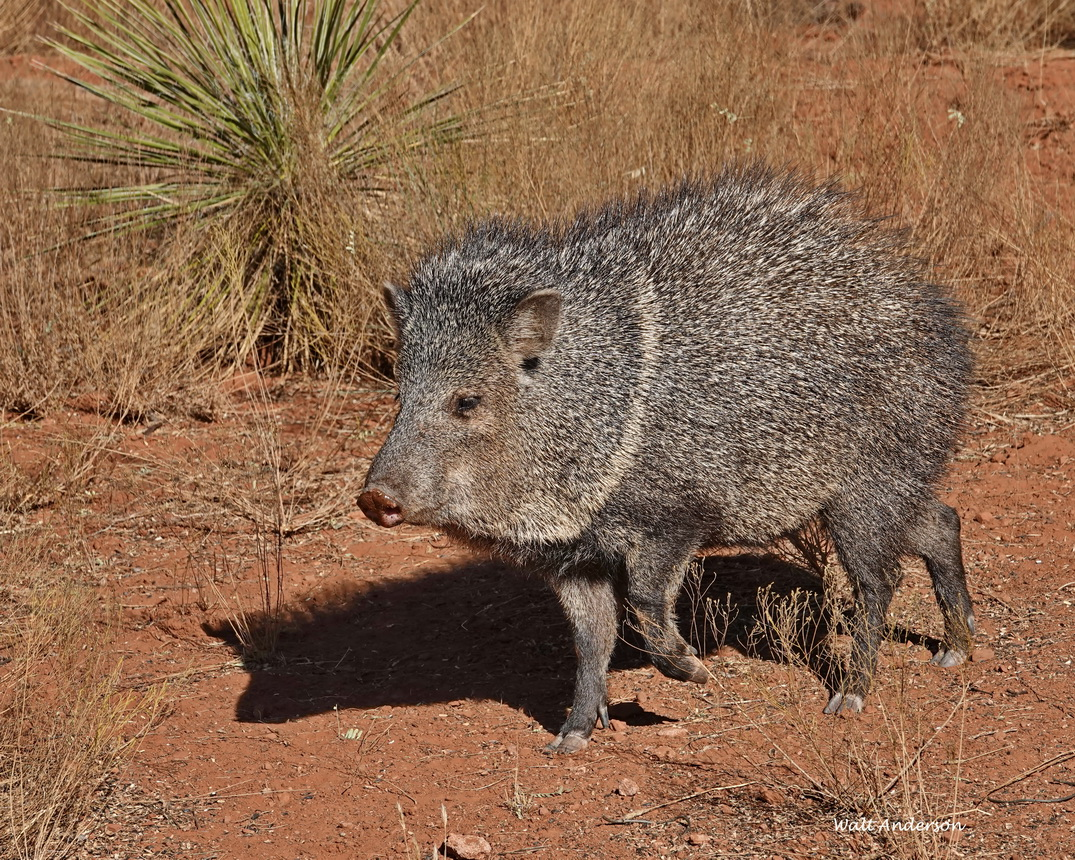
Don’t underestimate the destructive powers of a hungry Javelina either! They even eat cacti despite the sharp spines, irritating glochids, and oxalic acid content. The base of a yucca is a carb special for a ravenous peccary!
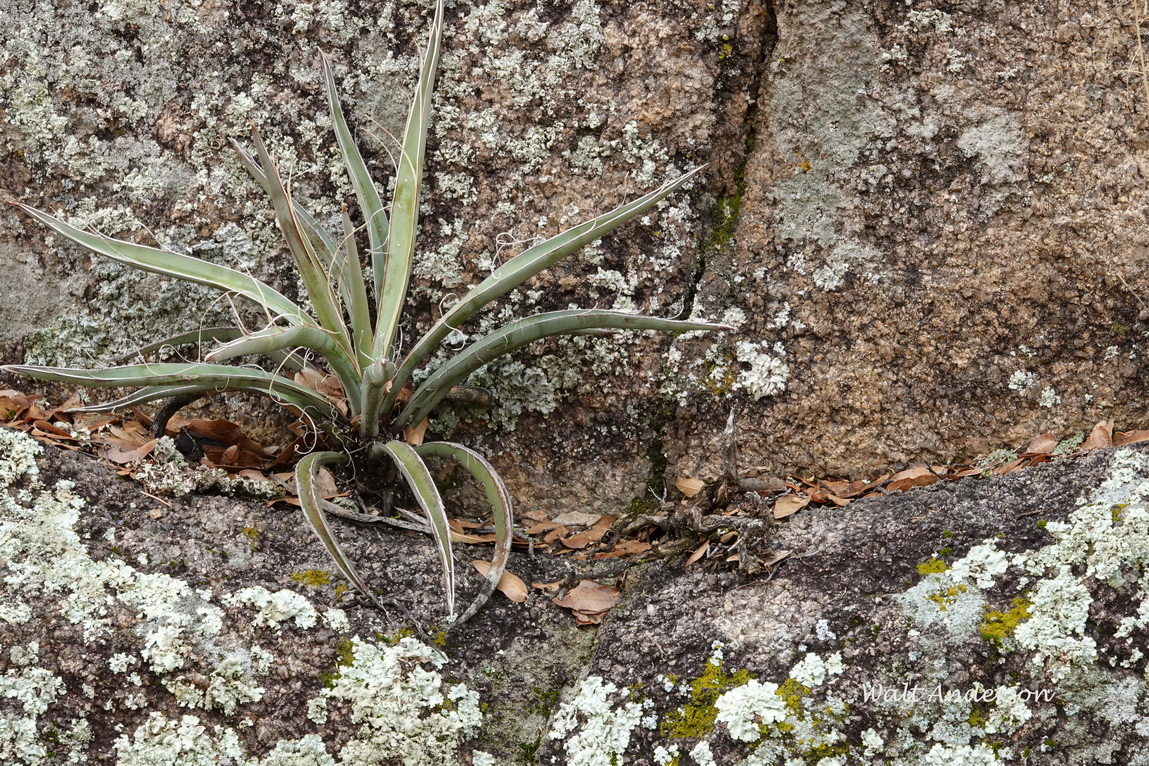
I certainly admire the toughness of a yucca that can grow out of a slender crack in the granite. There is a special kind of beauty in this hardiness.
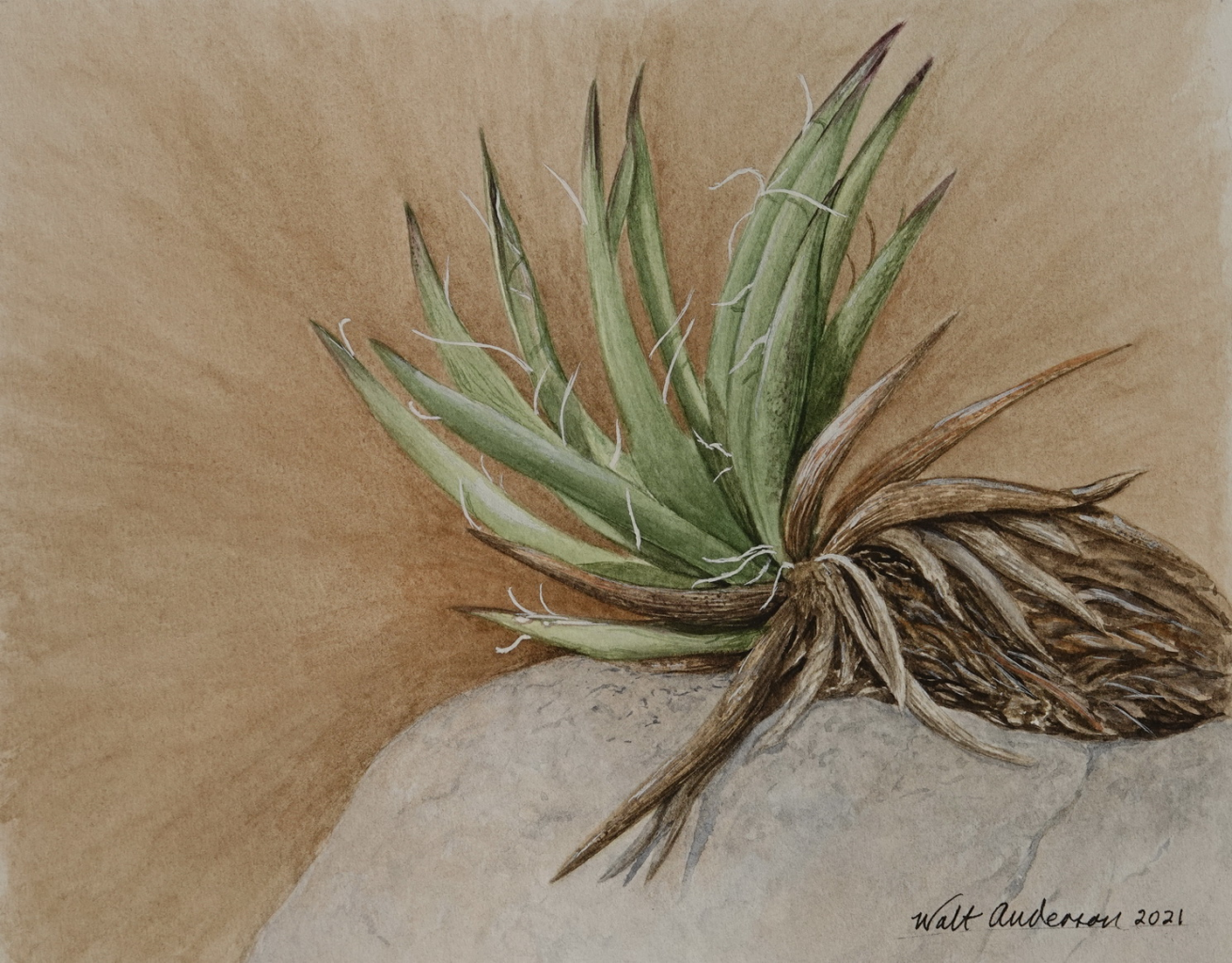
Which has inspired me to do this plein air watercolor painting of a yucca,
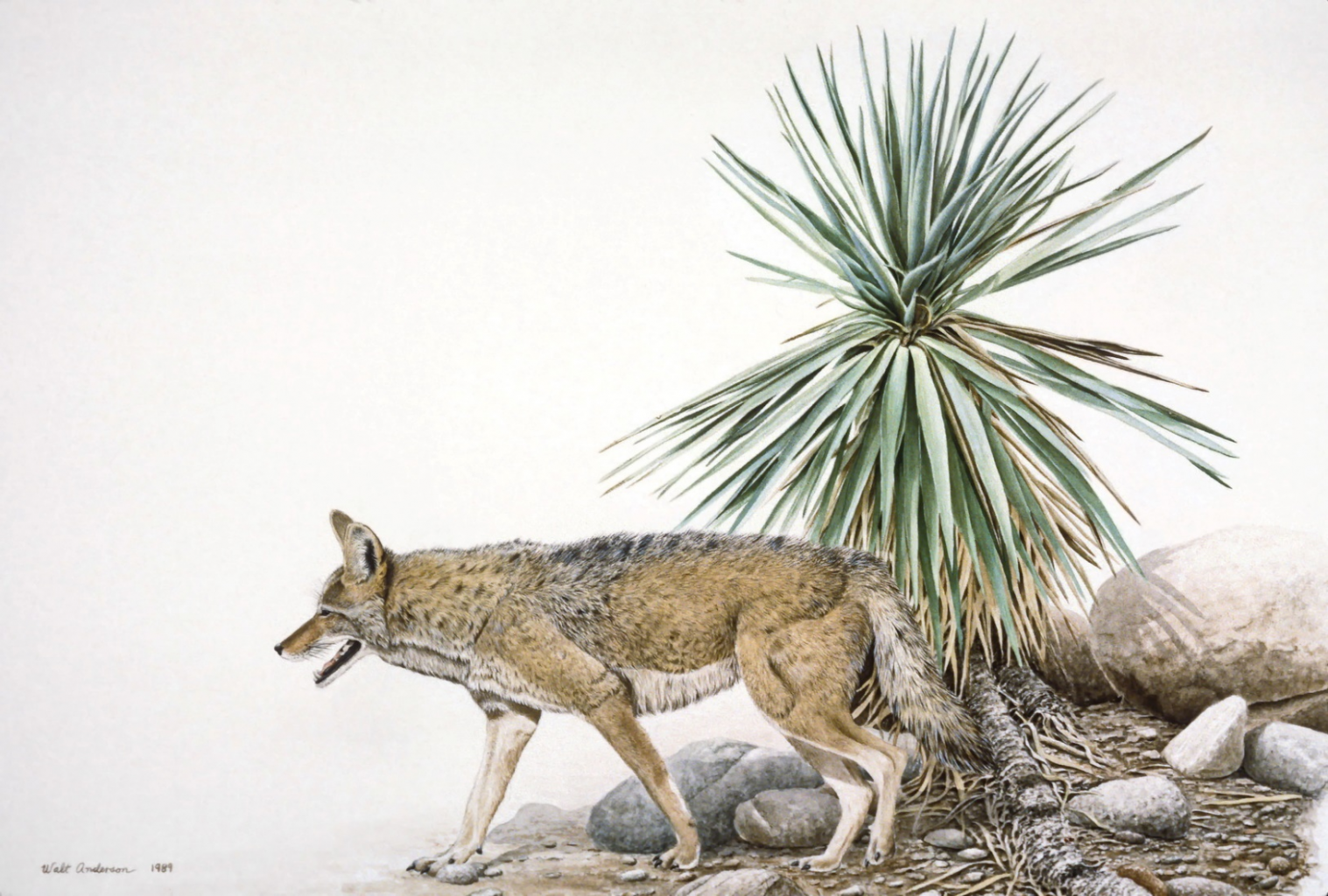
And, in an earlier phase of my life, to do this watercolor of a Coyote and a yucca. It was juried into a show and a book called “Wildlife: The Artist’s View” in 1990 by the Leigh Yawkey Woodson Art Museum. I had the inspiring opportunity to attend the show in Wausau, Wisconsin and meet the leading wildlife artists of the day. The next year, I accepted a professorship in Environmental Studies at Prescott College and stopped painting for 27 years to focus on that role. Now I have again pulled out my paints and brushes and resumed the storytelling potential of wildlife art.

As hardy as yuccas are, we shouldn’t take them for granted. Locked into a narrow coevolutionary bond with an insect, their ability to adapt to a rapidly changing climate may be limited. Already, drought years severely limit their reproduction and survival. If the emergence of yucca moths fails to coincide with the ripening of the flowers, then the whole system could fail, with both partners facing possible extinction. Each yucca appears to have its own species (sometimes several) of yucca moth, so a cascade of extinctions may occur.
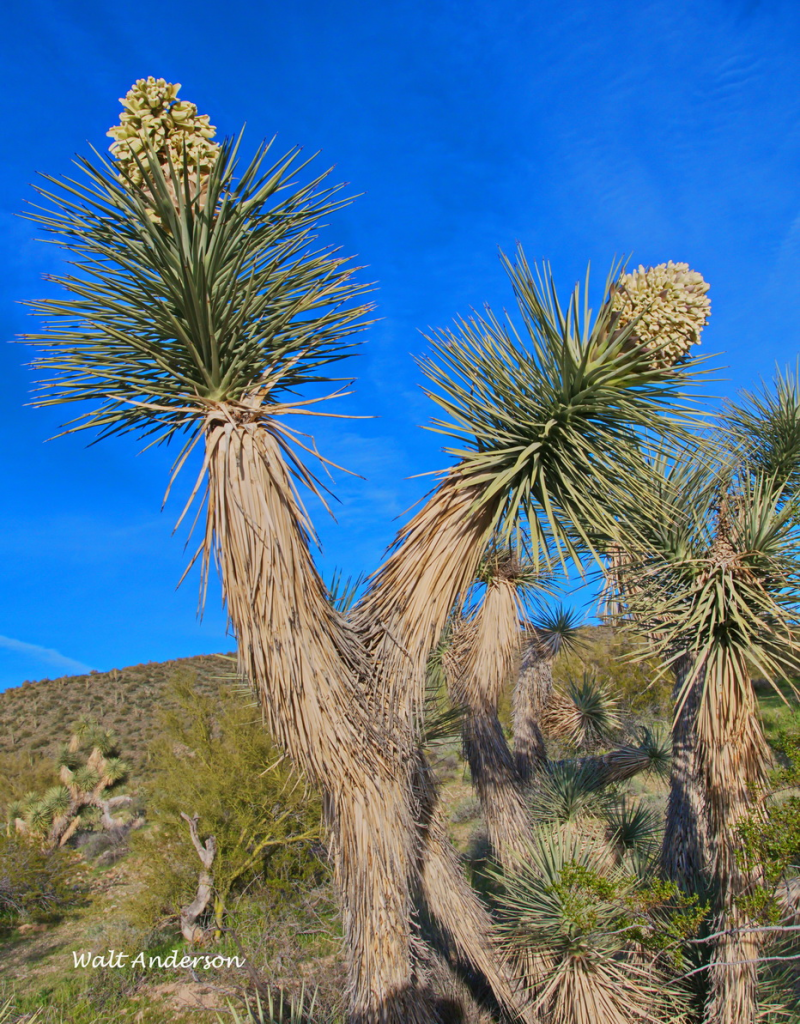
Imagine the disappearance of the Joshua Tree, one of iconic plants of the Mojave Desert. There is the wonderful Joshua Tree Parkway here in Arizona and the fabulous Joshua Tree National Park in SE California. If these plants disappear, will those place names be anything more than an epitaph to a lost species? What about all the organisms that used to depend on them?
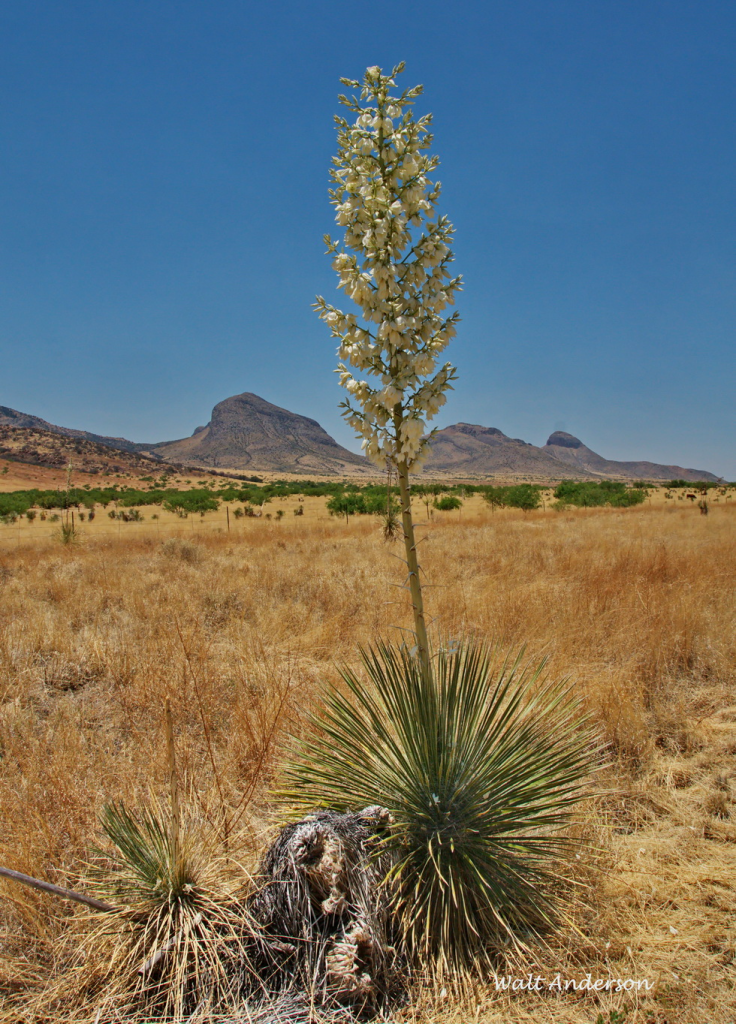
When I think about the potential loss of important components of diverse ecosystems, I am compelled to speak up for all of us to PAY ATTENTION and to do whatever we can to stop the dangerous unplanned experiment with which we are subjecting the natural world. Ignorance is not bliss. We have the science to show us what is happening, but we need the political will to do something about it. We are not a Banana Yucca Republic, but democracy also only works when it is well informed.
